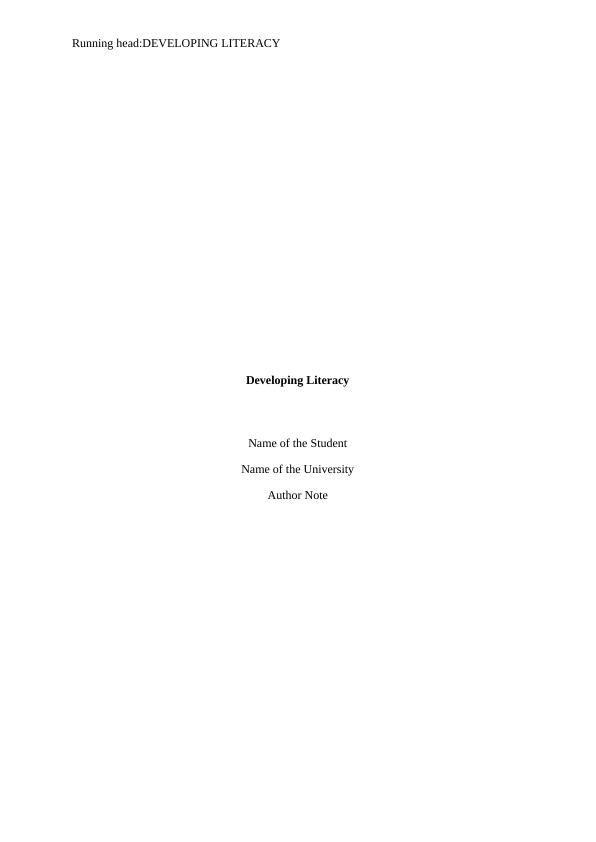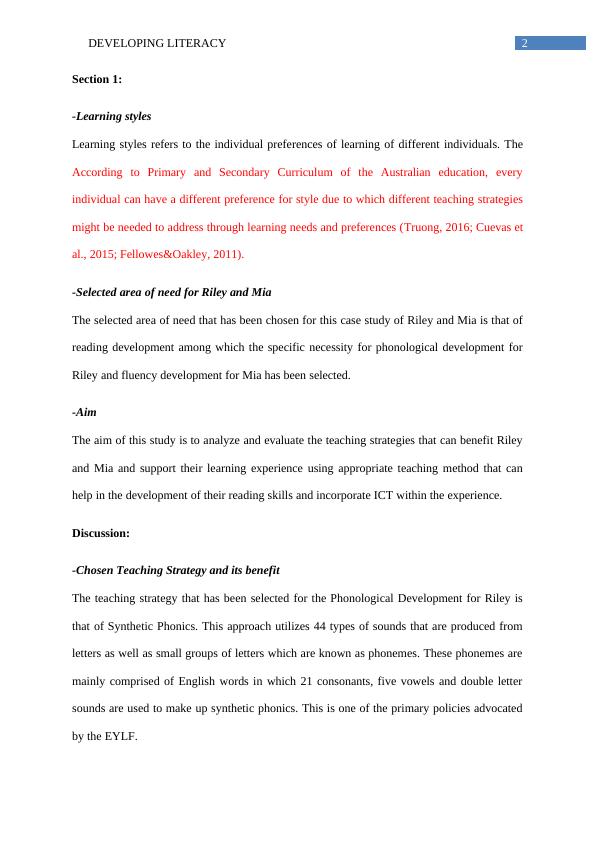Developing Literacy
Demonstrate understanding of strategies for developing reading skills and ability to put them into action by responding to scenarios related to reading development.
11 Pages2329 Words364 Views
Added on 2022-11-29
About This Document
This article discusses teaching strategies for developing reading skills and incorporating ICT in the learning experience of students. It focuses on the case study of Riley and Mia and their specific needs for phonological and fluency development. The benefits and limitations of Synthetic Phonics and Whole Language Approach are compared, and the importance of group-based learning and ICT integration is highlighted.
Developing Literacy
Demonstrate understanding of strategies for developing reading skills and ability to put them into action by responding to scenarios related to reading development.
Added on 2022-11-29
ShareRelated Documents
End of preview
Want to access all the pages? Upload your documents or become a member.
Assignment about Underpinning Theories and Approaches for Literacy Planning,
|14
|2258
|24
Supporting Phonics and Early Mathematics
|7
|908
|427
Importance of Phonological Awareness in Early Childhood Literacy Development
|5
|908
|96
Support Teaching and Learning
|9
|2545
|18
EDU 20001 : Developing Literacy
|10
|2277
|130
Developing Literacy Assignment 1B: Folio Part B
|8
|2164
|178




